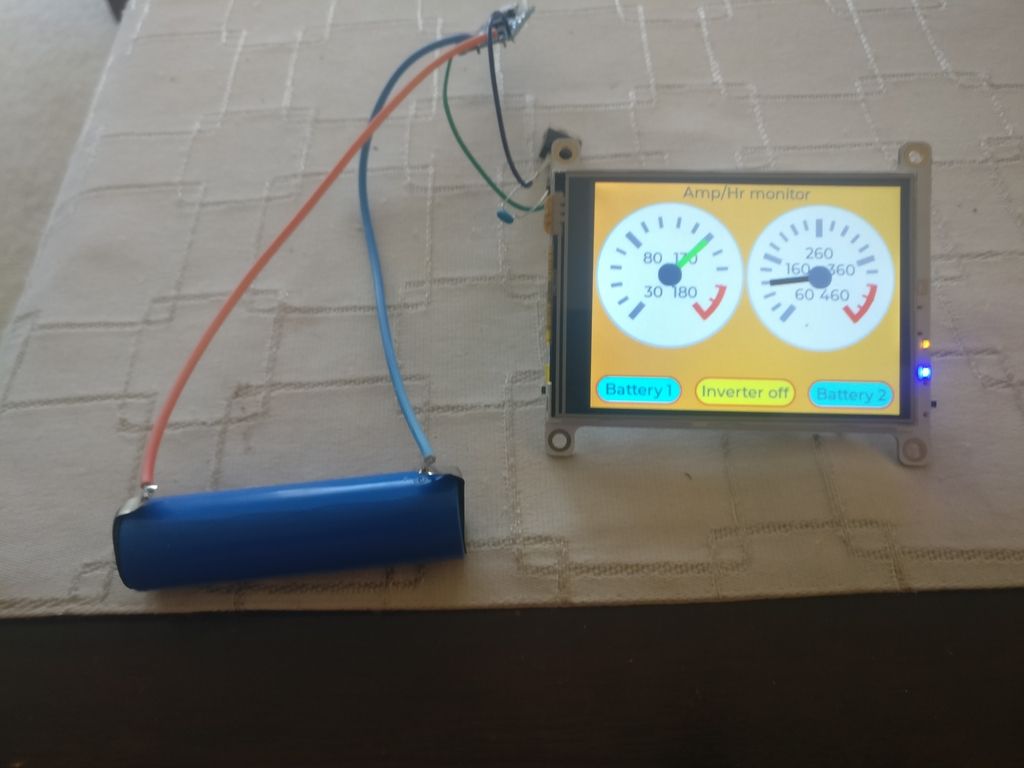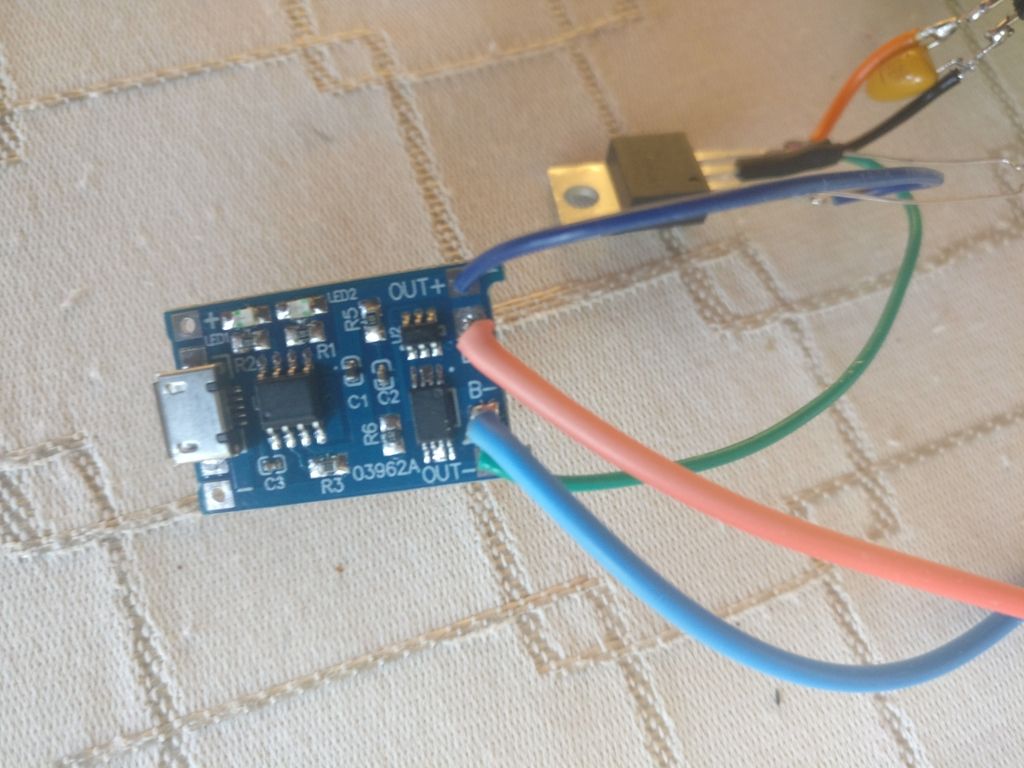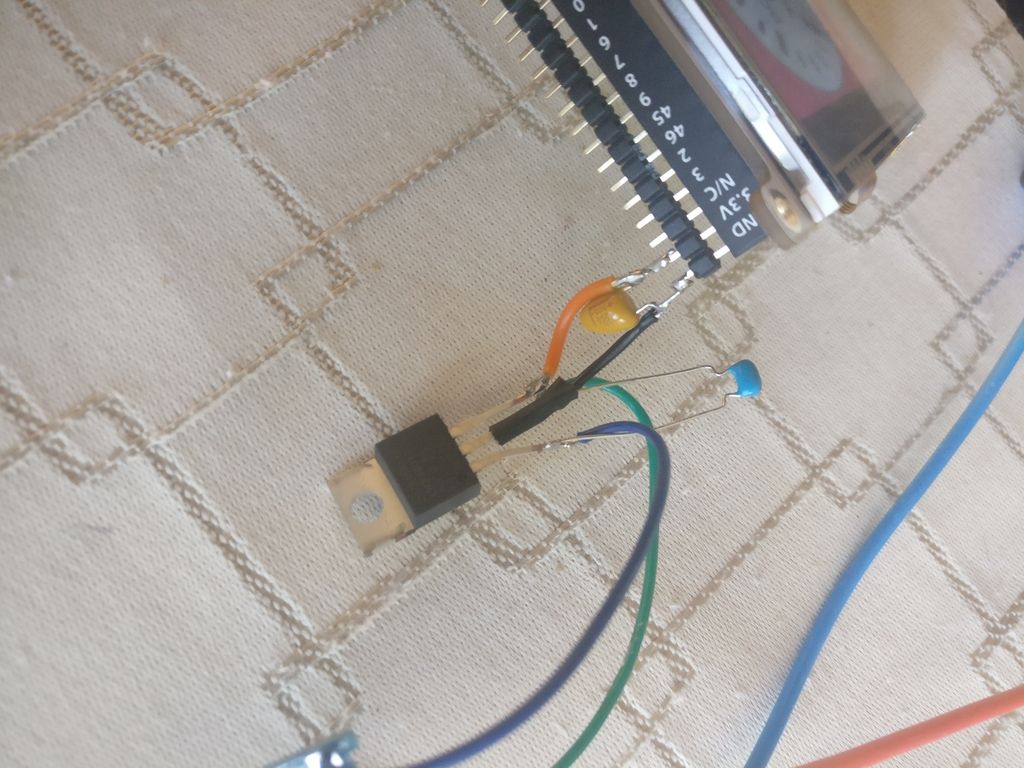Power Omega2 from 3.7 volts?
-
Okay, to illustrate (for anyone wanting to run off a LiPo cell), I quickly knocked up a Lipo with LM3940 regulator. Works fine with the attached Omega2Dash doing WiFi networking over 2 UDP sockets once per second plus running an App I've made with LVGL. Here are some photos.
The LM3940 has a 0.47uF ceramic on the input and a 68uF tantalum on the output. In this case, it is driving the Omega2+S plus the Dash display. I have a separate post about connecting to this part of the circuitry (search for 3.3V and 5V and Dash). Cost A$1.80or US$1.00.
The small PCB is a TP4056 based LiPo protection and charger board. Cost A$2.40 or US$1.40.
This cell should run the Omega-Dash for around 10hrs.
Regds,
DaveEdit: Corrected incorrect LM2940 to LM3940



-
@David-Kerr Awesome report!!
--Bill
-
Nice article @David-Kerr thank you !
-
Thanks to everyone for the answers and interesting stories! I solved my problem by applying the DS-DS converter LM2596.
-
Hi Cap33,
Glad you solved you problem. Good also that your Omega presumably still works after direct connecting the LiPo cell. However, if you are using a single 3.7V LiPo the input voltage is out of spec (too low) for the LM2596. LM2596 would be fine from about 4.75V upwards (so USB 5V, 12V et al). So if it works then that is more by good luck than anything else. Also a more expensive solution than a cheap LDO linear regulator.
Regds,
Dave
-
Okay. My 2600mahr LiPo ran the Dash for just over 9 hours. The LiPo was at an average of 15degC which derates the capacity to 2400mahrs. So I would expect 10hrs, so just over 9hrs is not too bad. The reason for the discrepancy is that the tail of the LiPo discharge cannot be used because the LDO cutout is about 0.1volts, so when the LiPo hits <3.4V the Omega2+ starts to misbehave. Total consumed energy was 8watthrs and "wasted" energy 0.86watthrs.
You could expect 24hrs continuous running with 2 high quality 18650 LiPos having higher AH rating.
Hopefully this is useful information for people contemplating putting the Omega2+Dash into portable applications.
Regards,
Dave
-
@David-Kerr
I opened the datasheet on the LM2940, but it says that the output voltage is from 5 to 15 volts.
https://html.alldatasheet.com/html-pdf/8827/NSC/LM2940/37/1/LM2940.html
-
I am so sorry- my old (73 year old) eyes are not so good any more. They are LM3940; I misread the 3 for a 2 but had the correct datasheet and did not look closely at the 2/3.
The voltage differential is 0.110V at 100ma and 0.5V at 1amp. However at around 240ma the differential is about 120mV. The capacitors absorb any surges (e.g. from the WiFi). So you still get 3.3V out until the LiPo drops to 3.42V. The Omega starts to misbehave below about 3.2V, depending upon production spread.
Regds,
DaveEdit: I also suggest looking at Texas Instruments or National Semiconductor datasheets rather than generics.
-
Okay, here's a little more information. I have measured my LM3940 and the voltage drop is only 90mV. So better than the worst case spec.
See thread
https://community.onion.io/topic/4170/omega2-dash-5v-and-3-3v/6
If powering an Omega2-Dash, you can use the onboard switching regulator and this saves a further 15mA of drain and (in my case) should add an extra 30mins of battery life.
You could use the OmegaDash switching regulator (or similar) with a normal Omega2 or S because it is LDO (Low Drop Out) but it is more components and cost. So if I was adding extra circuitry and a PCB to a portable Omega2 device, I'd use the switching reg but if only supply power I'd use a LM3940 (or similar) LDO linear regulator.
So, for my Omega-Dash units, I'm using the onboard 5V input fed from the TP4056 and the LiPo connected to the TP4056. Charging from the TP4056 USB/5V input.
I've gone back and corrected the 2940s to 3940.
Regds,
Dave
-
@David-Kerr
I bought an LM3940, put an output capacitor with a capacity of 220 microfarads, but Omega does not start even with an input voltage of 5 volts. The orange LED starts flashing, but turns off after a few seconds.
-
@CAP-33 , have you checked the output voltage and monitored it when the Omega2 fails the boot process?
What is your power supply ? Can it supply enough current?
Do you have a 0.47uF input capacitor on the LM3940?
Regds,
Dave
-
I assume you are running from a 3.7V cell as well as trying a 5V power supply?
One other thing. What package LM3940 are you using? I used a TO220 with no heatsink (as you will have seen in the photo), which was fine. On some of my other projects I am using SMD LM3940s from 5V to 3.3V with Omega2+ and Omega2. They definitely need heat-sinking or they will heat up and then likely shut down after a while.
Let us know how you go.
Regds,
Dave
-
@David-Kerr
First I'm running from a 3.7V cell, and then trying a 5V power supply. I use TO220 with no heatsink. After several measurements, I noticed that the output of the LM3940 has 3.28V without load. When I connect Omega, the voltage drops to 3.1V, which is not enough for Omega.
-
Sorry, I have been away for a few days.
You did not answer about the input 0.47uF. Do you have it?
When you measure the 3.1V output, what is the input from the 3.7V cell?
If the drop across the LM3940 is 0.6V then that is out of spec.
I have over 10 LM3940s in operation (some SMD, some TO220). None of them behaves like that.
I can only guess yours is unstable (long wires or no 0.47uF) or the 3.7V is no longer 3.7V with the Omega2 connected or (very unlikely) the LM3940 is out of spec. I assume you are using a "real" LM3940 (ie reputable brand and not a counterfeit one). However, I doubt it would be a fake one because I cannot imagine there would be any money in making a fake version of such a cheap item.
Regds,
Dave